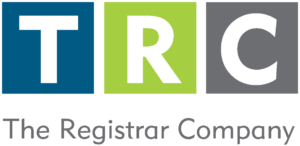Preparing for an ISO implementation process of any ISO standard can be overwhelming and stressful for organizations of any size. How an organization prepares for an ISO implementation process will depend on factors such as size and complexity of its processes, the current knowledge and culture related to the standard; i.e., quality, environmental, safety, etc; the maturity of any other existing systems related to the standard wishing to implement, and many others.
6 Tips to Facilitate the ISO Implementation Process
Despite the differences there may be between organizations, there are a few tips that will facilitate the ISO implementation process of any management system.
Know the Standard
It is essential that some personnel knows the management system’s requirements. Everyone does not need to be an expert on the requirements of the specific standard that will be implemented, but key workers need to fully know and understand all of the requirements of the standard.
Keep Everyone Informed
The implementation process is not a task of just a few chosen ones. Everyone needs to be involved in this process. Every worker needs to know what is being implemented, why is it being implemented, which are the benefits for the organization and for themselves, and how they will be involved in the process. When people are informed, they will be more open and willing to collaborate in the implementation.
Analyze the Organization’s Current Situation
Before starting to implement any ISO management system, an organization needs to know its level of compliance with the standard. This will allow the organization to understand beforehand its strengths and weaknesses regarding the ISO management system wishing to implement and estimate the time needed for implementation.
Map Your Processes
Establish and record current processes in order to know the relationships between departments and how the processes flow within the organization. This will allow organizations to plan their implementation by processes and not just by areas and departments.
Review Existing Procedures and Work Instructions
Many processes need written and documented information that will guarantee that activities are carried out in the correct manner. Organizations need to review which processes are documented and how many work instructions there are. It is not the same to develop a few documents and just review work instructions than to develop them from scratch. Organizations need to have an idea of how much time they will have to invest in developing and reviewing documents.
Review Current Training Programs
Evaluate existing training and awareness programs. Training and awareness are an important part in the implementation process and if an organization has not considered training its workers, it would be best to redefine these programs to make sure that a large percentage of workers are trained and informed about policies, procedures, regulations, etc that will be a part of their daily activities.
These are some recommendations that will help your organization prepare for the ISO implementation process of any ISO management system.
Note: Make sure that the whole organization is working for the same objectives and pulling in the same direction.




 Looking to expand your knowledge base? The Registrar Company, TRC, has designed over 500 courses and trained over 10,000 individuals since 1990. Our approach is based on current adult learning principles and uses proven, highly interactive participatory sessions and practical techniques that offer real behavioural change that can be implemented and applied immediately in the workplace.
Looking to expand your knowledge base? The Registrar Company, TRC, has designed over 500 courses and trained over 10,000 individuals since 1990. Our approach is based on current adult learning principles and uses proven, highly interactive participatory sessions and practical techniques that offer real behavioural change that can be implemented and applied immediately in the workplace. 
